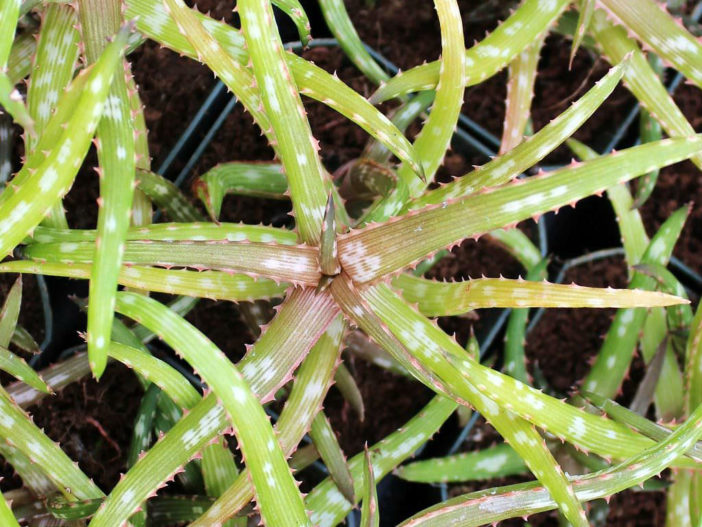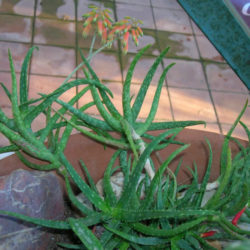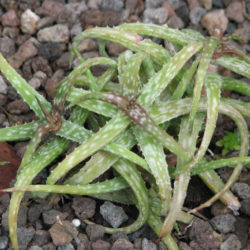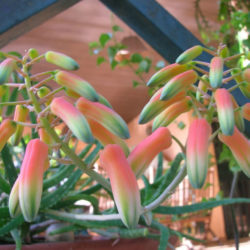Scientific Name
Aloe bakeri Scott-Elliot
Common Name(s)
Baker Aloe, Dwarf Aloe
Synonym(s)
Guillauminia bakeri
Scientific Classification
Family: Asphodelaceae
Subfamily: Asphodeloideae
Genus: Aloe
Description
Aloe bakeri is a small succulent that forms rosettes of fleshy, green to reddish-green leaves heavily mottled with white. It can grow up to 8 inches (20 cm) tall and 16 inches (40 cm) in diameter, forming a clump of up to 100 rosettes. The leaves are up to 4 inches (10 cm) long and 0.4 inches (1 cm) wide and have straight or slightly curved white teeth along the margins.
The tubular flowers are red or orange, becoming yellow towards the mouth and green at the tips. They appear in lax racemes that can reach up to 12 inches (30 cm) in height during the summer.
Origin
Aloe bakeri is native to southeastern Madagascar. It grows on rocky hills at low elevations in Taolagnaro district.
Etymology
The specific epithet "bakeri (bay-KAIR-ee)" honors John Gilbert Baker (1834-1920), an English botanist who worked at the library and herbarium of the Royal Botanic Gardens.

Hardiness
USDA hardiness zone 10a to 11b: from 30 °F (−1.1 °C) to 50 °F (+10 °C).
How to Grow and Care
Aloes are very forgiving plans. However, as with all succulents, they must never be allowed to sit in stagnant water, and the plant should be carefully monitored to watch for signs of overwatering.
Aloes are not particularly fast-growing and will only rarely need repotting. Repot plants in the spring that are tipping over their pots or have ceased growing. Use a fast-draining potting mix with one-third sand or pebbles. When repotting a larger plant, dividing the root ball carefully is possible. Some kinds of Aloe will send off off-sets that can be potted independently.
It needs an intense, bright light. They can withstand full summer sun once acclimated. In the winter, provide bright light. It prefers warmer temperatures of 70 to 80 °F (21 to 27 °C) but will survive down to 40 °F (4.5 °C). Feed with a cactus fertilizer in the summer only. Suspend feeding in the winter as the plant goes dormant.
See more at How to Grow and Care for Aloe.
Hybrids
Links
- Back to genus Aloe
- Succupedia: Browse succulents by Scientific Name, Common Name, Genus, Family, USDA Hardiness Zone, Origin, or cacti by Genus
Photo Gallery
Click on a photo to see a larger version.



